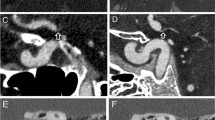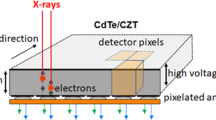Abstract
The effect of detector size in the broadening of the penumbra on the model in the Pinnacle RTPS is investigated. A second order polynomial was devised to correlate the source size parameter with the RTPS-calculated penumbra. The optimal source size parameter was calculated for penumbra measurements based on the diamond detector and a standard ionization chamber (IC). This work was done for Jaw fields, MLC fields with a leaf end radius of 8 cm, and MLC fields with a leaf end radius of 12 cm. The optimum source size of the 8 cm MLC fields matched the jaw fields, and an average (based on field sizes studied) of 1.1 mm for the diamond detector data and 2.4 mm for the ionization chamber was established. The effect of this overestimation of the source size parameter based on detector-induced penumbra broadening was considered for a clinical IMRT prostate plan by using two models (diamond and IC). There were differences in the DVH of the PTV and of OARs but these effects were of negligible clinical significance. Dose difference distributions showed dose difference areas to be in penumbra regions of the segments, with larger dose differences where penumbras intersected and/or there was a significant weighting on the segment. Gamma analysis was also performed between the two plans, and was found to increase the amount of fail rates significantly for both 2%/2 mm and 3%/3 mm criteria. This decreases the sensitivity of IMRT QA in the detection of systematic errors.




Similar content being viewed by others
References
IMRT-CWG (2001) Intensity-modulated radiotherapy: current status and issues of interest. Int J Radiat Oncol Biol Phys 51:880–914
Laub WU, Wong T (2003) The volume effect of detectors in the dosimetry of small fields used in IMRT. Med Phys 30:341–347
Metcalfe P, Kron T, Elliott A, Wong T (1993) Dosimetry of 6-MV x-ray beam penumbra. Med Phys 20:1439–1445
Dawson DJ, Schroeder NJ, Hoya JD (1985) Penumbral measurements in water for high-energy x rays. Med Phys 13:101
Das IJ, Ding GX, Ahnesjo A (2007) Small fields: nonequilibrium radiation dosimetry. Med Phys 35:206–215
Garcia-Vicente F, Bejar MJ, Perez L, Torres JJ (2004) Clinical impact of the detector size effect in 3D-CRT. Radiother Oncol 74:315–322
Sahoo N, Kazi AM, Hoffman M (2008) Semi-empirical procedures for correcting detector size effect on clinical MV x-ray beam profiles. Med Phys 35:5124–5133
Charland P, El-khatib E, Wolters J (1998) The use of deconvolution and total least squares in recovering a radiation detector line spread function. Med Phys 25:152–160
Garcia-Vicente F, Delgado JM, Peraza C (1997) Experimental determination of the convolution kernel for the study of the spatial response of a detector. Med Phys 25:202
Pappas E, Maris TG, Papadakis A et al (2006) Experimental determination of the effect of detector size on profile measurements in narrow photon beams. Med Phys 33:3700–3710
AAPM (1994) Americal Association of Physicists (AAPM) Task Group 40: Comprehensive QA for radiation oncology: report of AAPM radiation therapy committee Task Group 40. Med Phys 21:582–618
Das IJ, Cheng C-W, Watts RJ et al (2008) Accelerator beam data commissioning equipment and procedures: report of the TG-106 of the Therapy Physics Committee of the AAPM. Med Phys 35:4186–4214
Laboratories A (1999) Pinnacle3 physics guide: external beam and brachytherapy physics, P/N 9201-2048A Rev. A (Version 4.2). ADAC Laboratories, Milpitas
Bedford JL, Childs PJ, Hansen VN, Mosleh-shirazi MA, Verhaegen F, Warrington AP (2003) Commissioning and quality assurance of the Pinnacle3 radiotherapy treatment planning system for external beam photons. Br J Radiol 76:163–176
Starkschall G, Steadham RE, Popple RA, Ahmad S, Rosen II (1999) Beam-commissioning methodology for a three-dimensional convolution/superposition photon dose algorithm. J Appl Clin Med Phys 1:8–26
Jaffray DA, Battista JJ, Fenster A, Munro P (1993) X-ray sources of medical linear accelerators: focal and extra-focal radiation. Med Phys 20:1417
Yan G, Fox C, Liu C, Li JG (2008) The extraction of true profiles for TPS commissioning and its impact on IMRT patient-specific QA. Med Phys 35:3661–3670
Low DA, Harms WB, Mutic S, Purdy JA (1998) A technique for the quantitative evaluation of dose distributions. Med Phys 25:656–661
Clark BG, Teke T, Otto K (2006) Penumbra evaluation of the Varian Millennium and BrainLAB M3 Multileaf collimator. Int J Radiat Oncol Biol Phys 66:S71–S75
Cadman P, McNutt T, Bzdusek K (2005) Validation of physics improvements for IMRT with a commercial treatment-planning system. J Appl Clin Med Phys 6:74–86
Williams MJ, Metcalfe P (2005) Verification of a rounded leaf-end MLC model used in a radiotherapy treatment planning system. Phys Med Biol 51:N65–N78
Chang K-S, Yin F-F, Nie K-W (1996) The effect of detector size to the broadening of the penumbra—a computer simulated study. Med Phys 23:1407–1411
Cheng C-W, Cho SH, Taylor M, Das IJ (2007) Determination of zero-field size percent depth doses and tissue maximum ratios for stereotactic radiosurgery and IMRT dosimetry: comparison between experimental measurements and Monte Carlo simulation. Med Phys 8:3149–3517
Laub WU, Kaulich TW, Nusslin F (1999) A diamond detector in the dosimetry of high-energy electron and photon beams. Phys Med Biol 44:2183–2192
Martens C, Wagter CD, Neve WD (2000) The value of the PinPoint ion chamber for characterization of small field segments used in intensity-modulated radiotherapy. Phys Med Biol 45:2519
PTW-Frieburg (2008) Ionisation Radiation Detector Catalogue (available online)
Bucciolini M, Buonamici FB, Mazzocchi S, Angelis CD, Onori S, Cirrone GAP (2003) Diamond detector versus silicon diode and ion chamber in photon beams of different energy and field size. Med Phys 30:2149
Van-Dyk J (1999) The modern technology of radiation oncology. Medical Physics Publishing, Madison
Varian. Millennium MLC (2010) http://www.varian.com/us/oncology/radiation_oncology/trilogy/millennium_mlc.html
Lips IM, Dehnad H, Gils CHv, Kurger AEB, Heide UAvd, Vulpen Mv (2008) High-dose intensity-modulated radiotherapy for prostate cancer using daily fiducial marker-based position verification: acute and late toxicity in 331 patients. Radiat Oncol 3:15
Hansen EK, Roach M (2007) Handbook of evidence-based radiation oncology. Springer, New York
Deasy JO, Blanco AI, Clark VH (2003) CERR: a computational environment for radiotherapy research. Med Phys 30:979–985
Cancer_Institute_NSW (2010) Radiation oncology treatment protocol (02-1184.1), prostate, high risk, EBRT. https://www.treatment.cancerinstitute.org.au/cancerinstitute/cancerinstituteDADAServlet?sid=2581486CIS&ent=1ES100&page=2BENPC&cit_key=3535CIS&ctt_key=21ES100
Williams MJ, Metcalfe P (2006) Verification of a rounded leaf-end MLC model used in a radiotherapy treatment planning system. Phys Med Biol 51:N65–N78
Ezzell GA, Burmeister JW, Dogan N et al (2009) IMRT commissioning: multiple institution planning and dosimetry comparisons, a report from AAPM Task Group 119. Med Phys 36:5359
Childress NL, Bloch C, White RA, Salehpour M, Rosen II (2005) Detection of IMRT delivery errors using a quantitative 2D dosimetric verification system. Med Phys 32:153
Van Esch A, Bohsung Jr, Sorvari P et al (2002) Acceptance tests and quality control (QC) procedures for the clinical implementation of intensity modulated radiotherapy (IMRT) using inverse planning and the sliding window technique: experience from five radiotherapy departments. Radiother Oncol 65:53–70
Laub WU (2002) Comparison of TG-43 dose calculations to pinpoint ion chamber and diamond detector measurements. Phys Med Biol 47:N315–N318
Acknowledgments
The authors acknowledge Robin Hill for the loan of the diamond detector from the Royal Prince Alfred Hospital, Camperdown. The authors would like to thank Australian Rotary Health and the NSW Cancer Institute Clinical Leaders program for funding assistance for NH and PM respectively. Research by the third author was undertaken, in part, thanks to funding from the Cancer Institute of NSW, Radiation Therapy Academic Leaders program.
Author information
Authors and Affiliations
Corresponding author
Rights and permissions
About this article
Cite this article
Yuen, J., Hardcastle, N. & Metcalfe, P. A study into the relationship between the measured penumbra and effective source size in the modeling of the Pinnacle RTPS. Australas Phys Eng Sci Med 34, 233–241 (2011). https://doi.org/10.1007/s13246-011-0070-8
Received:
Accepted:
Published:
Issue Date:
DOI: https://doi.org/10.1007/s13246-011-0070-8




